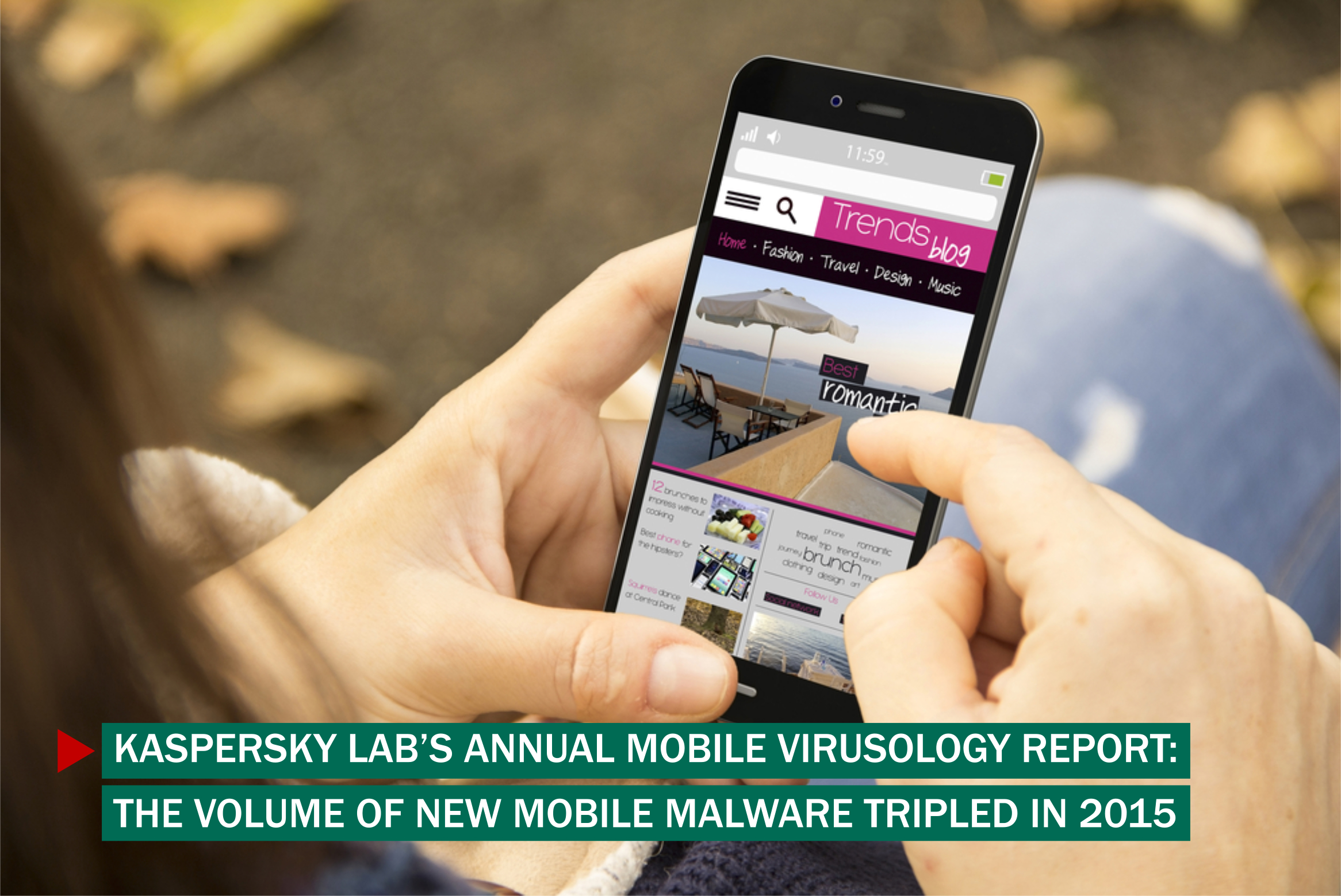Malicious software in smartphones rose 300% in 2015

The number of malicious software or “malware” in smartphones increased 300 percent in 2015 compared to 2014, international cybersecurity firm Kaspersky Lab said in its annual Mobile Virusology report.
More than 884,700 new malicious programs or apps were detected by Kaspersky for the whole of 2015. This figure is three times the figure for 2014 which was 295,500.
Among the most dangerous malware are known as “ransomware” which essentially locks a user’s smartphone and can only be unlocked by paying a ransom ranging between $12 and $100.
“The number of users attacked by ransomware increased from 1.1 percent to 3.8 percent between 2014 and 2015. Attacks were registered in 156 countries, with Russia, Germany and Kazakhstan the most hit,” Kaspersky said in a statement.
Around 94,300 users fell victim to ransomware in 2015, this was five times the number in 2014 which was around 18,400.
“As mobile devices become more and more functional, cybercriminals have become more and more sophisticated at attacks that attempt to steal money from users,” Roman Unuchek, Senior Malware Analyst at Kaspersky Lab USA, said in the statement.
READ: #InquirerSeven Tips to protect your social media account
Malware posing as legitimate apps
Kaspersky also warned against the increase of Trojan malware that look like legitimate apps.
“Nearly half of the top 20 Trojans in 2015 were malicious programs displaying intrusive advertising on mobile devices. Fraudsters used every available method to propagate these Trojans, through malicious web-banners, fake games and other legitimate apps published in official applications stores,” it said in the report.
“In some cases they were positioned as legitimate software preinstalled by the device vendor. Some of these apps have the ability to gain super-user access rights or root access. Such rights give attackers an almost unlimited ability to modify information stored on an attacked device,’ it added.
There were also types of malware that target financial or banking apps. Cybercriminals use these to hack into the system of a financial organization where they can do whatever they want.
In 2015, Kaspersky exposed the cybercriminal group known as “Carbanak” which stole nearly $1 billion from banks all over the world after they hacked the banks’ internal network.
RELATED STORIES
Depositors at risk from bank hackers, experts warn
Banks told to strengthen cybersecurity measures














